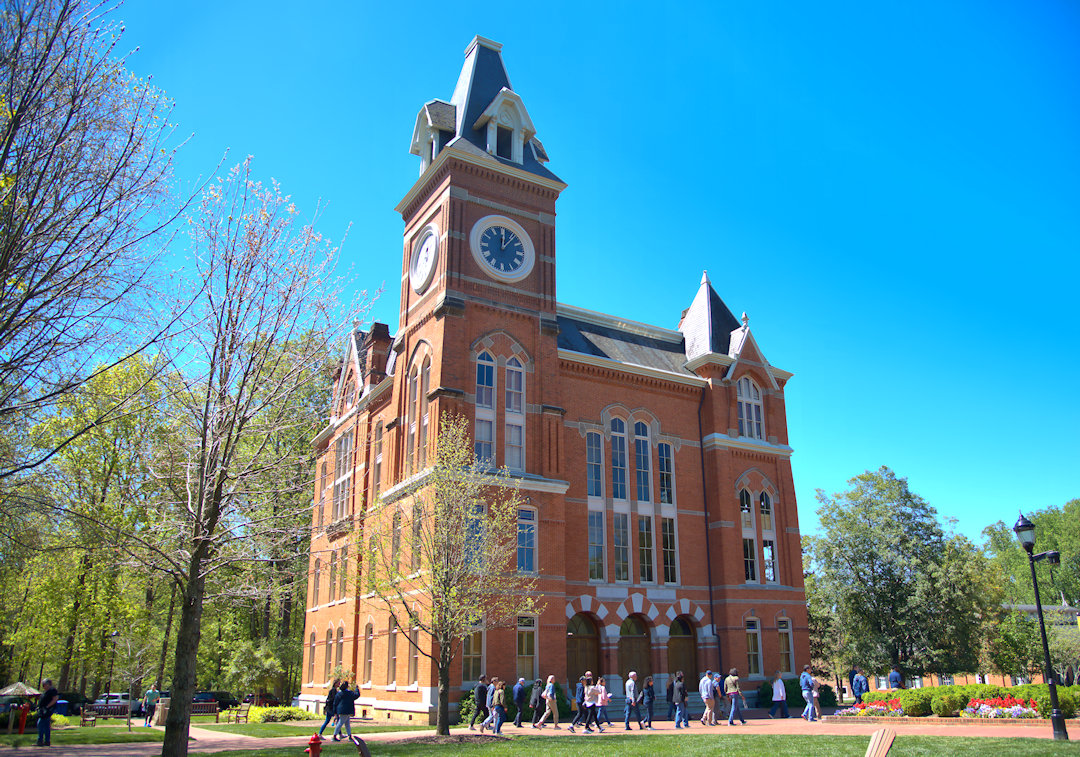
‘
In Cornerstone and Grove, Erik Blackburn Oliver notes: “Seney Hall is the most recognized and celebrated building on the Oxford campus, arguably among the most marvelous edifices ever built by Emory College or the University.” The Victorian landmark was designed by the firm of William H. Parkins and Andrew Bruce, the most prominent practitioners in Atlanta at the time.
A beloved symbol of the college to this day, Seney Hall was built to be the most prominent building on campus, replacing Old Main, which originally served that purpose and had been razed in 1872. Its namesake was a Brooklyn banker, George I. Seney. Seney had been so inspired by a sermon by Emory College president Atticus Haygood, urging sectional and racial reconciliation, that he gifted the school with over $130,000 in 1880. It has stood the test of time and now houses administrative offices.
An aside: Like its neighbor, Johnson Hall, Seney Hall also makes an appearance in the opening sequence of the television show, The Dukes of Hazzard.
Oxford Historic District, National Register of Historic Places
















